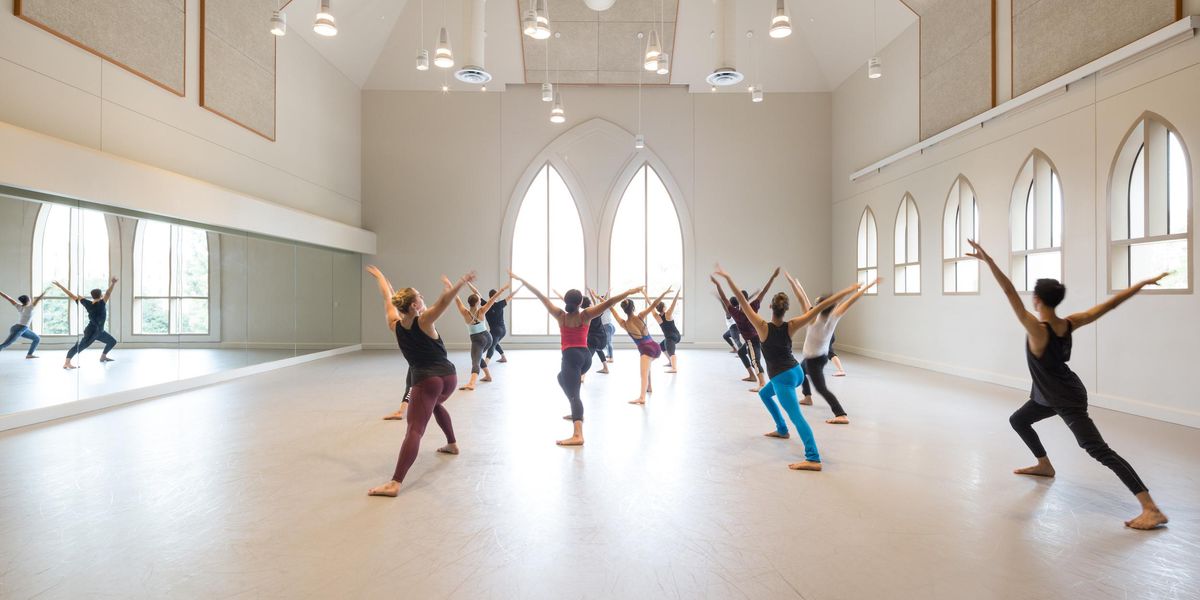Your Body: Too Loud?
A rehearsal of Braham Logan Crane’s History, set to Angela Ai’s pulsing music, makes an impact. The sheer intensity of the dancing at Houston Metropolitan Dance seems to reflect Crane’s high-octane choreography and the music’s blasting volume. “We wanted it loud so we could feel Ai’s emotions,” says Marlana Walsh, the company’s managing director. The volume helps the dancers mirror the music’s vitality. Few realize that prolonged exposure to high decibels may jeopardize their hearing.
Unlike knees and hips, ears are not replaceable. Exposure to high volumes over time will cause hearing loss, something dancers need to think about before turning up their iPods or rehearsal volume. Recent research at the Massachusetts Eye and Ear Infirmary suggests that damage to hearing continues long after the noise has stopped. The sooner you protect your ears, the better chance you have of avoiding cumulative damage.
William Hal Martin, Ph.D., a professor of otolaryngology (ear, nose and throat) at Oregon Health & Science University, isn’t surprised that dancers like to pump up the volume during rehearsal. “The vibrations caused by sound creates a tremendously sensual experience,” he says. “Our bodies are covered with touch receptors that let the brain know when something is in contact with our skin. Sound waves from high decibel levels stimulate those same sensors all over our bodies. We not only hear loud music, we feel it all over. That’s why it’s so hard to sit still when the music is blasting—it drives us all to dance.”
Volume and duration make the greatest impact on hearing loss; the type of earphone you use makes no difference. The higher the decibels, the less safely you can listen. Be wary of sounds over 85 decibels. Sure, you can go to RadioShack and get yourself a decibel meter to check the safety of your rehearsal volume, but you don’t have to. There’s a simple way of telling if the music is too loud: if you have to raise your voice to be heard. To get a sense of the decibels around you, normal speech is about 65. Rock concerts run at about 110 to 120 decibels, and a gunshot is 160 decibels. “Sounds above 130 decibels cause immediate and permanent damage, typically starting in the high-frequency area of the ear,” says Martin.
With personal listening devices like iPods and cell phones, people don’t realize how far up they have turned the volume. Ackland Jones, an audiologist at Massachusetts Eye and Ear Infirmary, points to research suggesting that prolonged use of these devices poses a hearing risk. “Your iPod is capable of 110 decibels,” says Jones. “Use common sense. If the sound is shaking the whole car, it’s too loud. Keep in mind that sounds don’t have to be painful to do damage.” If you have to remove your earbud to hear someone, you are over the line.
Audiologists recommend that if you can’t turn it down, move away from the sound source or use hearing protection. Dancer and percussionist Stephanie Marshall can’t escape the booming percussion when she’s onstage in the off-Broadway hit Stomp. After Marshall noticed a sensitivity in her ears with high frequencies, she had her hearing tested. “The audiologist suggested earplugs, which I now wear during the second half of the show, especially during the number when we are smashing metallic trash cans,” says Marshall.
Foam and flange earplugs are readily available at drugstores. They come in all shapes, sizes, and price ranges. “The best earplug is the one that is comfortable and easy to use so you will actually use it,” says Martin. “Size is important. If they don’t fit, they will work as well as a screen door on a submarine.”
Most ears experience some temporary hearing loss periodically. That’s why after a rock concert, sounds may seem dull, like you are underwater. Permanent hearing loss tends to be gradual. Martin describes the permanent damage to the ear cell hairs as akin to a lawn. “If a crowd walks across the lawn once, it may flatten the grass, but much of it will recover. But if a person walks back and forth on the same stretch day after day, the grass will die and not grow back. An extra layer of safety like earplugs is worth the investment.”
Nancy Wozny writes about health and arts from Houston.




